| HOME |
|---|

| HOME |
|---|

Beyond the orbit of Mars lies the Asteroid Belt, a vast expanse of space 344 million miles wide that separates the inner solar system from the outer solar system, and is filled with rocky debris left over from the formation of the solar system, 4.5 billion years ago. Caught in a great cosmic tug-of-war between the gravity of the Sun, and the gravity of massive Jupiter, this primordial rubble was unable to accrete into a planet, leaving us with millions of chunks of rock orbiting the Sun between Mars and Jupiter. These rocks came to be called asteroids, from the Greek "asteroeides" meaning starlike, because through a telescope they can reflect just enough sunlight to look like tiny little stars.
Asteroids range in size from small boulders over a meter in size, to small planets hundreds of miles in diameter. The largest known asteroid is named Ceres, 568 miles (908 kms) in diameter. In August, 2006, the International Astronomical Union (I.A.U.) introduced a new class of solar system object called a Dwarf Planet, and the first two objects to assume that classification were the former planet Pluto, and the asteroid Ceres. NASA's Dawn spacecraft captured the two images of Ceres below from a distance of 29,000 miles on February 19, 2015.
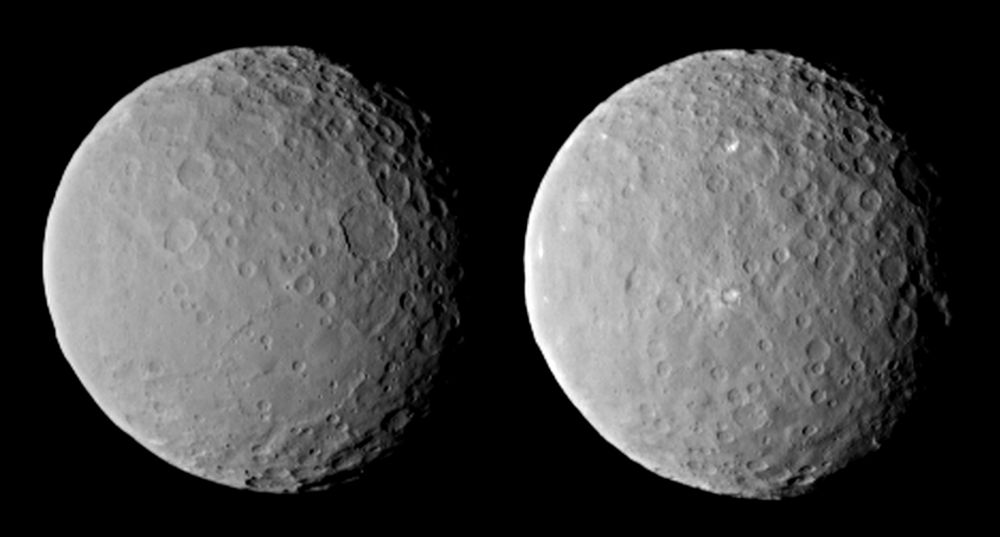
The second largest asteroid discovered so far is 330 miles (528 kms) in diameter, and named Vesta. Although significantly smaller than Ceres, it is actually brighter because it has a more reflective surface.
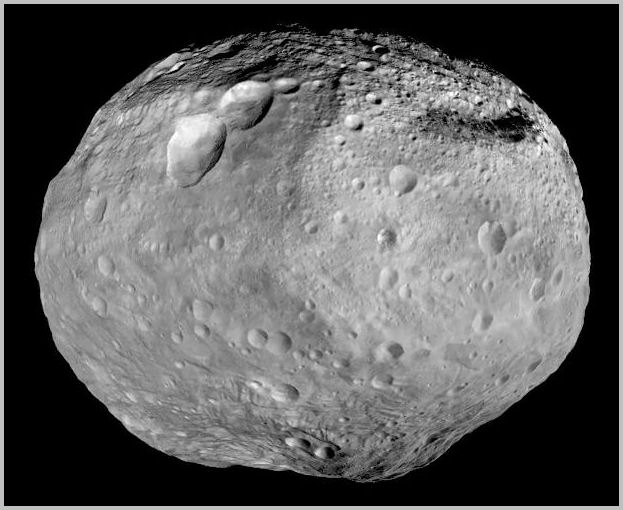
Some asteroids even have their own moons, such as asteroid 243 Ida, pictured below. NASA's spacecraft Galileo took this photo as it passed through the Asteroid Belt on its way to Jupiter, August 28, 1993. Ida (one of the nymphs who raised Jupiter), is 36 miles long. Its moon, Dactyl (one of the children of the nymph Ida), is one mile in diameter, and orbits Ida at a distance of 56 miles.
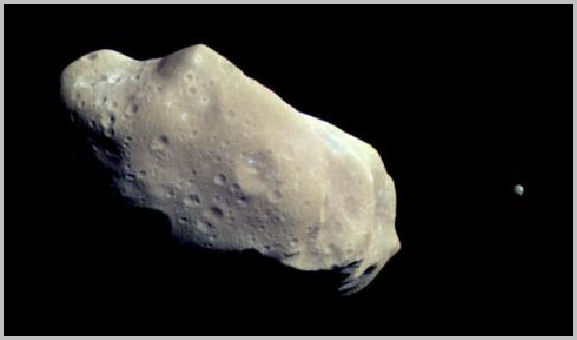
Contrary to Hollywood imagery, the Asteroid Belt does not resemble a crowded cosmic freeway at rush hour. Even though there are millions of asteroids in the Asteroid Belt and collisions are not impossible, there is a great deal of room for them to move around in, and individual asteroids are in fact separated by vast distances.
Although the majority of asteroids reside in the Asteroid Belt, they can be found anywhere in the solar system. They like to hang out at the Lagrange points of a planet's orbit, and follow it around the sun. As illustrated in the diagram below, there are places in a planet's orbit where the combined gravity of the Sun and planet exactly balance centrifugal force, trapping small bodies like asteroids. Jupiter in particular, has large clouds of asteroids at its Lagrange points.
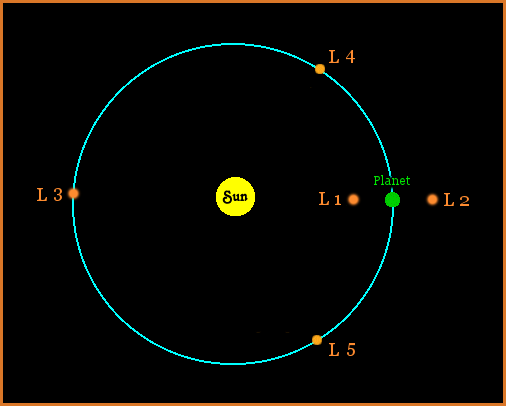
Their vulnerable size makes asteroids particularly susceptible to tidal (gravitational) forces, so that they are easily influenced and captured by larger bodies, and over the course of billions of years, have spread far and wide through the solar system. You never know where they will show up and how much trouble they will cause. They have caused trouble to our planet Earth in the past, and will undoubtedly try and cause trouble in the future. About 50,000, years ago, an asteroid 80 feet in diameter traveling over 30,000 mph slammed into the ground near Winslow, Arizona, creating an impact crater almost a mile wide, pictured below. The crater is popularly referred to as Meteor Crater, although that appellation is technically incorrect, as the 80 foot asteroid was well above the maximum size of a meteor (one meter), according to the most current (2009) definition by The Meteoritical Society.
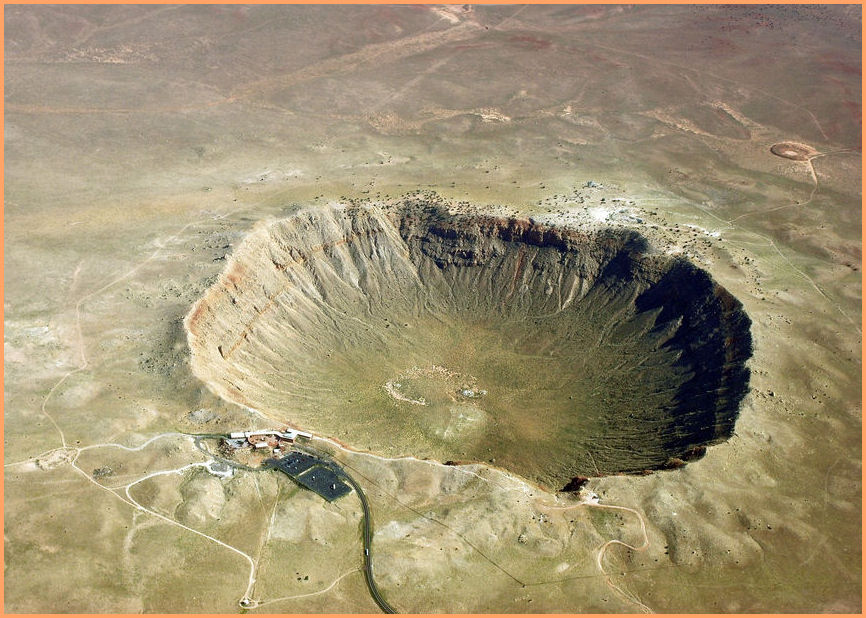
One of the most cataclysmic asteroid impacts in the history of our planet occurred 65 million years ago, when an asteroid over a mile in diameter impacted off the coast of the Yucatan Peninsula, Mexico, digging a crater 3,000 feet deep, and 112 miles wide, now known as the Chicxulub Crater. The impact released the energy equivalent to 300 megatons of TNT, or 15,000 times more powerful than the 20 kiloton atomic bomb that killed 150,000 people in Hiroshima, August 6, 1945. The worldwide climatic trauma the asteroid impact produced annihilated 70 % of life on Earth, including the dominant life form at the time, dinosaurs.
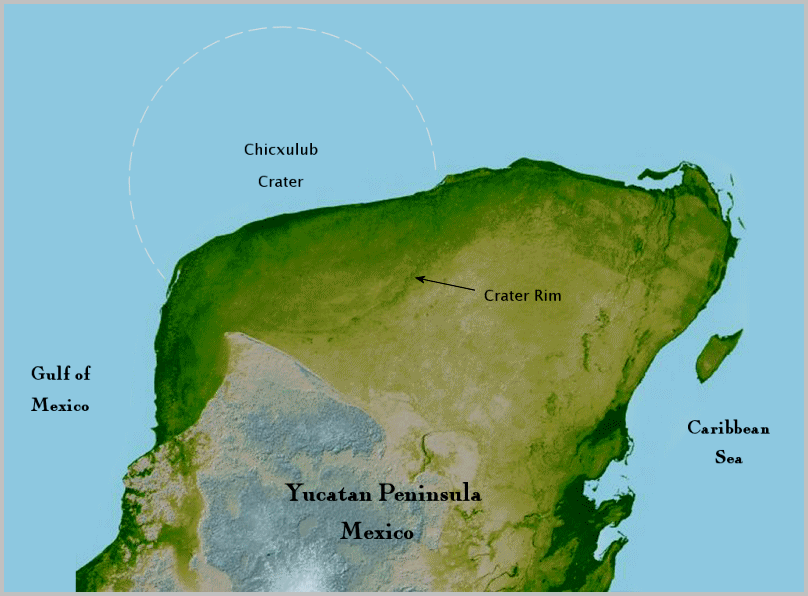
To try and predict future collisions with asteroids, NASA now operates the Near-Earth Asteroid Tracking System, which keeps an eye on any asteroids moving in our direction. There are also many other international organizations, as well as hundreds of individuals in many countries doing the same, so we should have lots of warning of an asteroid on a collision course. Unfortunately, like the proverbial car-chasing dog, if and when we catch an asteroid on a collision course with Earth, we still have no good plan on how to deal with it.
NASA has found one asteroid that will almost hit Earth on April 13, 2029. The asteroid, designated 2004 MN4, is 320 meters in diameter, and will miss Earth by only 18,600 miles (30,000 kms). It should be easily visible to the naked eye, and put on quite a show, so mark your calendars!
|
|
|
| SOL | MERCURY | VENUS | EARTH | METEORS | MOON | MARS | ASTEROIDS | JUPITER | SATURN | URANUS | NEPTUNE | PLUTO | COMETS |
|
|
|